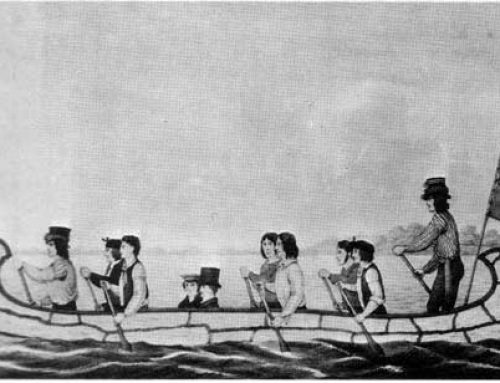
Can you see the sheepskins? How about the television? (1973)
When people met the first Spanish explorers in the 1500s AD, most Navajo people were living in hogans. By trading with the Spanish settlers in the 1500s and 1600s AD, Navajo people were able to improve their hogans.
First people got sheep from the Spanish settlers, and they began to sleep on sheepskins instead of on woven grass mats. Then they learned how to spin and weave the sheep’s wool into blankets so they could have warm wool blankets. And they traded with the Spanish people to get steel tools so people could cut bigger logs and build bigger hogans than they had had before.

Navajo hogan with a stove (1946)
In these bigger hogans, people sometimes put furniture, like beds and tables, and sometimes they made windows.
When other people in North America began to have iron stoves in their houses, in the 1800s, many Navajo people also put stoves in their houses.
By the 1900s, some Navajo people began to live in plank houses like people of European descent. But even those who live in plank houses may still have a hogan nearby for religious ceremonies or for sick people.
Learn by doing: check out a sheepskin in a store
More about the Navajo after 1500
Bibliography and further reading about Navajo houses:




